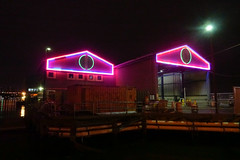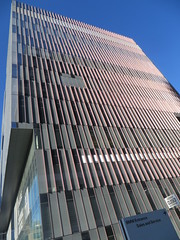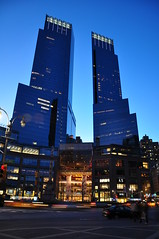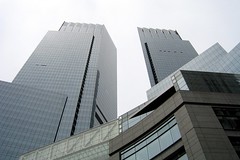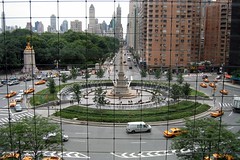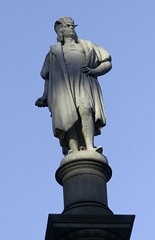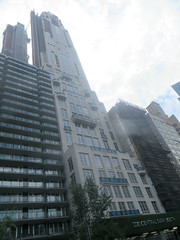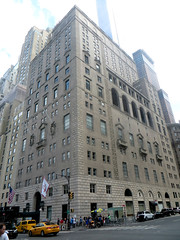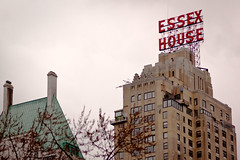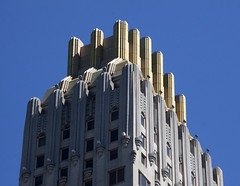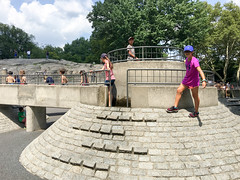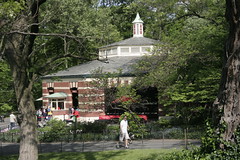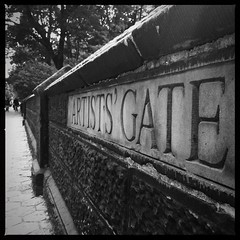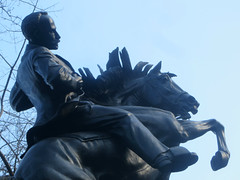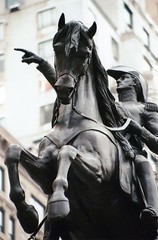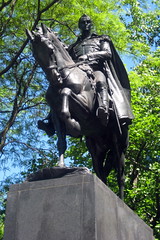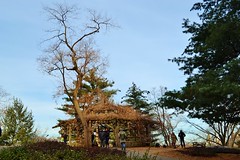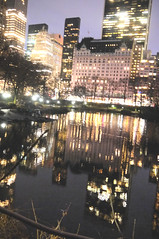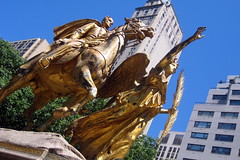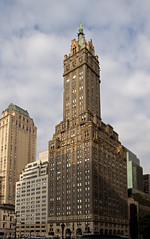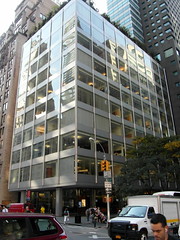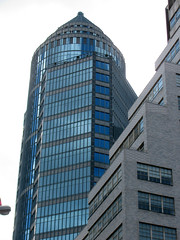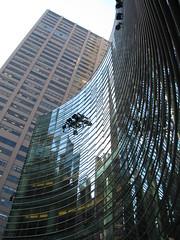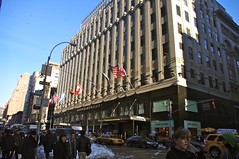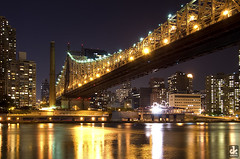South:
50 (corner): This is the third incarnation
of the luxury hotel in Midtown Manhattan, and the
second on Central Park South. It used to be the
San-Moritz hotel, known as "the biggest little hotel in town."
In 1935, it became home to Kurt Weill and Lotte Lenya,
who were fleeing Nazi Germany. Later, in
1941, artist Marc Chagall came here after leaving
Nazi-occupied France. It has
also been home to columnist Walter Winchell
and Yankee star Mickey Mantle. Winchell,
who supposedly lived here rent free in
return for plugging the hotel in his column,
threatened to leave if management allowed
gangster Lucky Luciano to live here; they didn't.
On the Marvel show Jessica Jones, the villain Kilgrave
takes the title character here when she's under his psychic control.
40: A
1941 apartment building
designed by Mayer & Whittlesley, built on the site
of the Dalhousie, a pioneering 1884 apartment house.
Gangster Meyer Lansky, an associate
of Luciano's, lived here from 1948-53.
38: F. Scott and Zelda Fitzgerald
rented an apartment here in 1920-21, where Scott
worked on The Beautiful and the Damned.
36: Singer Al Jolson lived here in 1922,
at the height of his popularity.
30: This hotel, owned by
"Queen of Mean"
Leona Helmsley, was the
site of her house arrest after she
was released from her tax-evasion
prison sentence. She and her husband Harry built
the 46-story hotel in 1971. Previously,
Ethel Merman lived at this address in the 1960s.
On the 15th floor was the Penthouse Club (c. 1930-1968), owned by organist
Paul Taubman, who provided music for 21 and other gameshows, as well as the soap opera Edge of Night.
The Beatles are said to have come here after they appeared
on Ed Sullivan. Later was Salvation Two and Nirvana.

This Henry Hardenbergh-designed castle
opened in 1907, replacing an earlier
outgrown version.
F. Scott and Zelda Fitzgerald lived the high
life here in 1922. Frank Lloyd Wright rented suite 223 here
from 1953 until his death in 1959; it was
here that he designed the Guggenheim Museum.
The Beatles stayed here on their first visit
to America in February 1964.
Truman Capote's Black and White Ball was held here
on November 28, 1966. From 1988 until
1995 it was owned by Donald Trump.
The hotel is
the setting of the children's classic Eloise,
and is a setting for innumerable films, including
North by Northwest,
Barefoot in the Park, Funny Girl, Plaza Suite,
The Way We Were, The Great Gatsby,
Network, Love at First Bite, Arthur, The Cotton Club,
Crocodile Dundee, Big Business, King of New York,
Home Alone 2 and Almost Famous.
It was repeatedly featured on Sex and the City
and The Sopranos.
Grand Army Plaza
This plaza, technically a part of
Central Park but really a distinct entity,
is bifurcated by Central Park South, a
layout inspired by Paris' Place de la Concorde.
It honors the Grand Army of the Republic, the
powerful post-Civil War veteran's organization,
comparable to the American Legion.
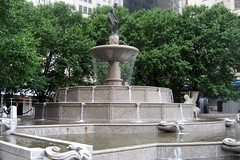 The southern half of Grand Army Plaza is centered on this fountain,
into which F. Scott Fitzgerald
once jumped "just out of sheer joy,"
It was funded by the will of publisher
Joseph Pulitzer
--a beyond-the-grave challenge to his rival William
Randolph Hearst, who had underwritten Columbus
Circle's Maine Memorial. The statue in the
fountain is
Karl Bitter's Abundance,
featuring the Roman goddess
Pomona. Bitter, who had promoted the Place de la Concorde
as a pattern for the Plaza, finished the clay
model for the sculpture the same day he was fatally
struck by a car outside the
Metropolitan Opera House.
The southern half of Grand Army Plaza is centered on this fountain,
into which F. Scott Fitzgerald
once jumped "just out of sheer joy,"
It was funded by the will of publisher
Joseph Pulitzer
--a beyond-the-grave challenge to his rival William
Randolph Hearst, who had underwritten Columbus
Circle's Maine Memorial. The statue in the
fountain is
Karl Bitter's Abundance,
featuring the Roman goddess
Pomona. Bitter, who had promoted the Place de la Concorde
as a pattern for the Plaza, finished the clay
model for the sculpture the same day he was fatally
struck by a car outside the
Metropolitan Opera House.
|
